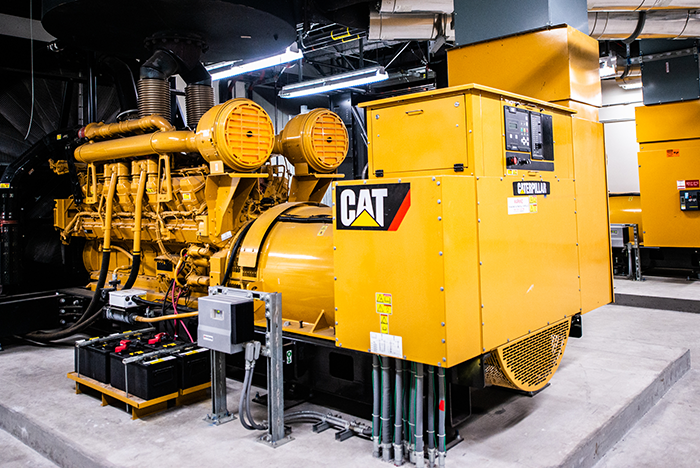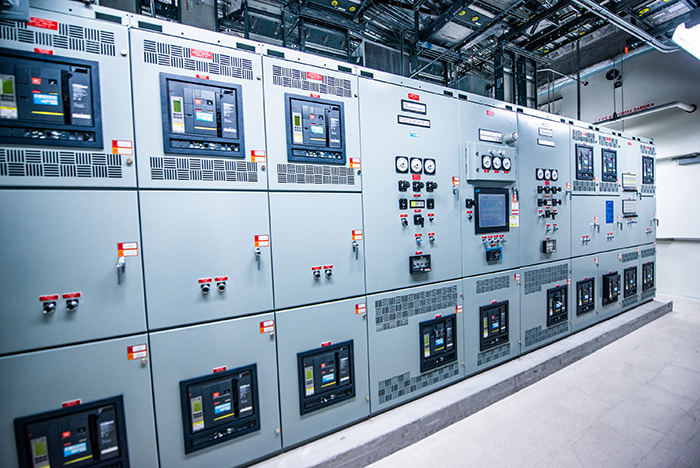Sticking to the essentials in health care power systems

Newer methods for power supply in health care systems have spurred efforts to update electrical system requirements.
Image courtesy of ASHE
Forget everything you know about power systems in health care. Over the past six decades, it has been extremely confusing to define the terms emergency power supply, emergency power supply system and essential electrical system as well as their individual applications in health care facilities. This confusion stems from the historical reliance on power generators, either diesel or natural gas, in health care facilities. Consequently, many power system requirements in various code and standard documents tend to pertain solely to generators.
Adding to this confusion is the National Fire Protection Association’s NFPA 101®, Life Safety Code®, which requires power used for life safety equipment to comply with NFPA 110, Standard for Emergency and Standby Power Systems. NFPA 110 historically has focused on diesel or natural gas generators. This background has led many authorities having jurisdiction (AHJs) to interpret that a generator set is the only allowable power source to support health care facilities. This interpretation is supported by older editions of NFPA 99, Health Care Facilities Code, as well as Article 517, Health Care Facilities, which is found in NFPA 70®, National Electrical Code® (NEC). Earlier versions of both these codes clearly contained generator-specific references, terminology and requirements.
However, changes in technology, regulations and financing have created new ways to tackle old problems. But the field continues to face engrained thinking that resists change even when that change could be for the better.
Confronting history
The journey to fix this problem was started 15 years ago by health care advocates who proposed phased changes by first adding fuel cells to the power system requirements specified in NFPA 99, then to the NEC and finally to NFPA 110. The aim was to allow health care facilities to expand the options for emergency and standby power sources beyond diesel generators.
This effort hasn’t been an easy task and faced significant opposition from stakeholders who had been thinking in one way for decades. As a result, the NFPA 110 committee, comprised of well-intentioned diesel generator experts, agreed to include fuel cells in the standard but have failed to keep the fuel cell requirements up to date. This is despite the fact that both NFPA 99 and the NEC greatly expanded the range of available power sources for essential systems with their adoption of microgrids.
NFPA 99 references NFPA 110 as a single-stop-shop of requirements for emergency and standby power systems, and in recent years it has become apparent that referring to NFPA 110 for these power system requirements for health care was probably the wrong path. A new solution may be needed, and fuel cells might need to be removed from NFPA 110 entirely and placed in their own standalone document. Adding to the complexity, NFPA 110 also covers performance requirements, creating many conflicts with NFPA 99's performance requirements.
Installation requirements aren’t immune from conflicts either.
The NFPA Standards Council ruled that NFPA 99 shall have jurisdiction for all performance requirements for health care electrical systems, while the NEC is responsible for all electrical system installation requirements for all parts of health care buildings. Keeping that in mind, a clear separation between the purposes and scopes of these documents is necessary.
The NEC’s Article 700, Emergency Systems; Article 701, Legally Required Standby Systems; and Article 702, Optional Standby Systems, all focus on installation requirements for the respective systems that they are named for. Each one is largely drafted in isolation from the others, written with the mindset that the system being referred to will be the only system in a given building. Because of this, there is very little coordination between NEC articles 700, 701 and 702, and even less coordination when it comes to Article 517. But this is rightfully so. The NEC’s Chapter 7 articles apply generally to all occupancies, and typically only one of these systems would be hosted in a single building. That same concept doesn’t apply for health care, however, leaving health care facilities managers to decipher which NEC article applies to which system. (See Connor Frazier’s article “Understanding the NEC and its health care applications” to help sort out these requirements.)
The NEC states that “Chapters 5, 6, and 7 apply to special occupancies, special equipment, or other special conditions and may supplement or modify the requirements in Chapters 1 through 7.” In summary, Article 517, which is included in Chapter 5 of the NEC and is specific to health care buildings, supplements and modifies the otherwise generic requirements found in other NEC articles.
A streamlined solution
Health care systems are complex and need to perform for life safety in the event of a fire (i.e., operating systems that provide power to fire alarms, egress lighting and similar functions while the building continues to operate and provide critical services for patients who are sheltering in place); for the critical life safety of patients (i.e., supporting patients dependent on life-critical equipment); and for business continuity (i.e., ensuring hospitals remain operational to serve community health care needs).
Health care is a much different use case than most other buildings that host systems only focused on egressing building occupants for fire/life safety. Health care occupancies require additional redundancy and robustness that cover other situations in the defend-in-place environment, requirements not addressed in NFPA 110 or the Chapter 7 requirements of the NEC. In addition, health care needs additional continuity and redundancy not addressed in Article 702, Optional Standby Systems.
The inadequacy of these texts to meet the requirements of health care facilities begets the need for a single code or standard that is specific to the field.
To illustrate this need, consider health care’s three electrical branches. Instead of a generator for each purpose, health care utilizes a single system with multiple branches known as the essential electrical system or EES. The EES branches include the life safety branch, which covers fire safety systems; the critical branch, which covers power for life support equipment; and the equipment branch, which powers selected equipment needed for hospital staff to continue patient care.
Newer editions of NFPA 99 address EESs in health care facilities. It is considered the “parent” document that establishes the performance needs of an EES, detailing how one system can accommodate all the power needs of the building and its occupants. From there, the NEC addresses the installation of those systems, such as wiring methods, and NFPA 110 and other documents address the inspection, maintenance and care for specific portions of these systems.
The American Society for Health Care Engineering (ASHE), the NFPA 99 Electrical Systems Committee and the NEC Code Making Panel 15 have been seeking to streamline the requirements listed in these documents to coordinate terminology, remove conflicting requirements, and eliminate language in NFPA 99 and the NEC that pertain only to one type of power source technology (e.g., generators), allowing for other power source types in health care facilities.
Part of this process has been to review the EES requirements in NFPA 99, including requirements from other documents that are referenced in the code. For example, generic references to the NEC’s Article 700 have introduced many conflicting requirements by assuming the power source used in a facility is a generator and only intended to support fire/life safety systems. Instead of sending users into a maze of confusing and conflicting requirements found in Article 700, Code Making Panel 15 has incorporated the necessary requirements from Article 700 into Article 517. Similarly, the NFPA 99 Electrical Systems Committee incorporated necessary requirements that apply to any power source technology in Chapter 6 of NFPA 99, removed generator-specific requirements and referenced NFPA 110 when a generator is used as a power source for an EES.
Other efforts include streamlining terminology, which has been a huge source of confusion within the field. Terms like alternate power source, emergency power source, backup power, EES, emergency power supply system and emergency power supply need to be clearly defined and only used where appropriate.
For instance, backup power systems in health care are often referred to as “emergency power.” This term suggests a crisis, when in fact the uses for backup power are planned for in health care. When a system transfers to its backup source, patient care continues seamlessly; the only difference is that instead of receiving power from a utility, the power is generated on-site. The term “emergency power” can cause unnecessary media frenzy and panic among patients if they think a hospital is in a state of emergency.
As technology evolves and microgrids become more common, the lines between emergency, alternate and normal power sources will continue to blur. This calls for simplifying power source terminology. Simply stated, health care facilities operate an electrical distribution scheme that may be powered by a utility at times and a fuel cell at other times, and the EES can be supplied by any single or multiple sources of power at any given time, none of which are strictly tied to an emergency context.
Future committee business
The NFPA 99 Electrical Systems Committee and the NEC Code Making Panel 15 aren’t the only committees involved in developing requirements for health care power systems. Other committees also weigh in, each with a slightly different focus.
In many situations, the committees developing requirements may only see part of the story. Everyone knows that hospital systems are critical, so when each committee establishes requirements for redundancy and reliability, they may artificially inflate the size and cost of these systems without understanding their complete impact.
For example, one committee of the NEC focuses on demand factors. Most of these demand factors have been in existence for decades without any data to support them. As a result, these requirements are overly conservative and have not adapted to changes in technology. They fossilize a status quo, creating health care electrical systems that are three to four times larger than the peak loads they will experience. As more jurisdictions and owners move to electrify their buildings, these distortions become hugely problematic from a cost, space and even safety perspective.
Proposals for the next edition of the NEC include revised requirements to Article 517’s demand factors based on published studies from the NFPA Research Foundation and the health care community. This effort needs to be extended to include demand factors for business areas within health care settings. A business occupancy may contain various types of businesses, so demand factors need to be high in those settings to cover unknown uses. But the same is not true for the business areas within a health care occupancy.
Business areas in health care are very predictable, which means the demand needs for these spaces can be accurately planned for. However, in lacking that understanding, committees remain cautious about allowing health care to develop its own demand factors to be applied in business areas within the health care occupancy.
While these committees are composed of subject matter experts with a wealth of experience, they may lack the broad application experience and vision needed to ensure these documents work together efficiently. The NFPA 99 Electrical Systems Committee and ASHE membership, however, bring the broad expertise needed to advocate for changes, including demand factor revisions, that will ensure power systems are designed, operated and maintained appropriately for health care.
Chad Beebe, AIA, CHFM, CFPS, CBO, FASHE, deputy executive director of ASHE Regulatory Affairs.





